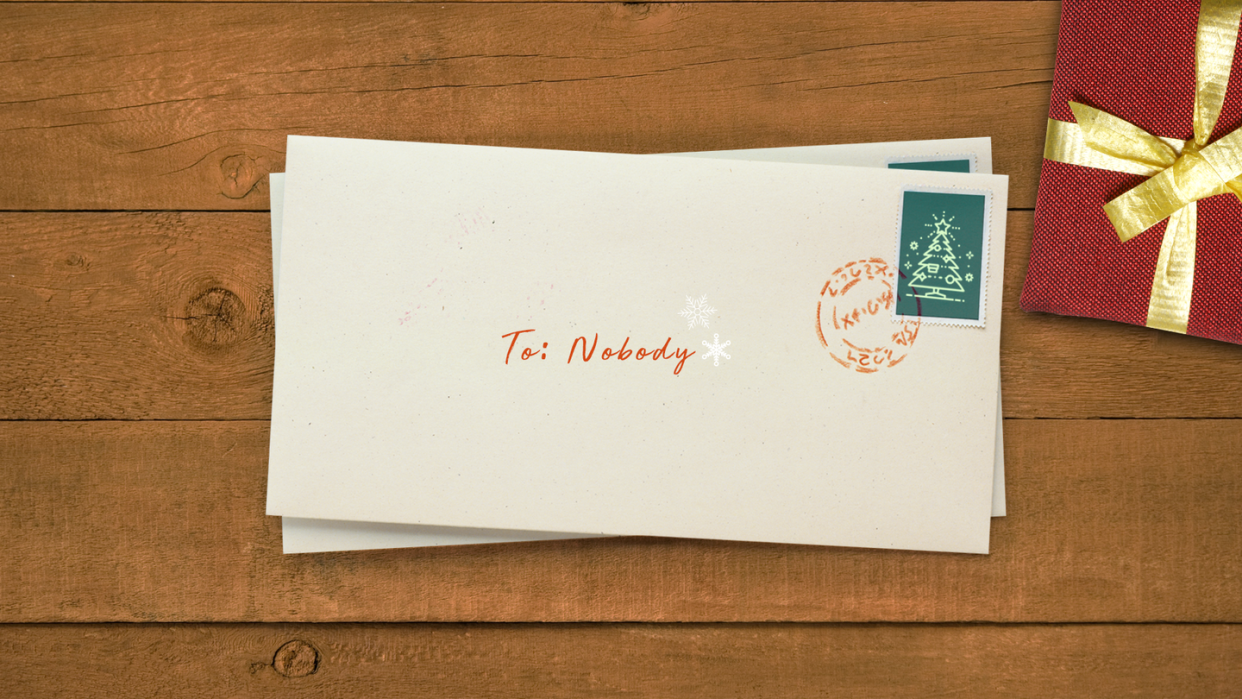I'm Not Sending Christmas Cards This Year — and Neither Should You

"Hearst Magazines and Yahoo may earn commission or revenue on some items through these links."
I admit it: I’m a consummate Millennial. My husband and I have a small-batch coffee subscription we make every morning using a kitchen scale and a pour-over machine. I carry my stuff in a New Yorker tote bag, and I’ve been known to enjoy a slice of avocado toast in the morning. I don't own a house, and probably never will. But there’s one way I differ from my peers: Even though I love crafting, I don’t plan on sending Christmas cards this year. Neither should you.
Despite (or perhaps because of) our screen addictions, Millennials are actually sending more cards than anyone else. According to the American Greeting Card Association, Americans purchase approximately 6.5 billion greeting cards each year and of those, 1.6 billion are Christmas cards. According to research from the U.S. Postal Service, sales of greeting cards has gone up again this year for the third year in a row. Millennials are the ones sending the most, outspending our Boomer parents since 2015.
Maybe it’s because we want to hold something other than our phones. Maybe it’s the kitschy, throwback element of paper cards we enjoy. Or maybe we’re doing it pseudo-ironically, like the ugly Christmas sweaters we can now buy everywhere from Urban Outfitters to BJ’s. But none of those rationales outweigh the main reason I can’t get behind cards: They’re neither heartfelt nor necessary anymore.
Social media keeps us connected
This year in particular, I'm spending more time on FaceTime and Zoom calls with my loved ones than ever before, keeping us close even though we're physically separated. I've spent 2020 rekindling relationships with people I'd lost touch with years ago, offering a tiny bright spot in a truly horrific year. And thanks to now-ubiquitous social media, not only do I know what my parents, friends, and people I barely spoke to in college are up to — I can also see virtually endless photos of them at any time (not to mention their meals, pets, and favorite memes). That makes Christmas cards with an annually updated family photo, bland sentiments, or sometimes-lengthy written insert, all but obsolete. Gone are the days when we only heard from Great Aunt Gilda once a year when her spindly handwriting showed up in the mailbox sometime in December. Now, I can see what she’s making for dinner, which TV news she’s watching, and eavesdrop on her digital conversations via comment threads all day if I want.
All of this connectivity certainly has its downsides — I could have lived a hundred lifetimes without knowing some of my so-called friends’ political proclivities, for example – but it has made keeping in touch infinitely easier. When I was growing up, my parents sent out a page-long Christmas letter in their card every year. It detailed everything that had happened since the last one, mostly for the benefit of further-flung family and friends we didn’t talk to much. It felt impossibly old-fashioned, even in the days before Facebook. Why, I wondered, were we writing letters like Laura in Little House on the Prairie when we could have just picked up the phone or sent a quick email?
Who are we writing for, anyway?
Every year, my parents used to roll their eyes at some of their friends’ more detailed letters that got impossibly granular about topics nobody but the sender actually cared about. Most memorable was the person who went into intimate detail about an intestinal issue that had taken place the year before. (You know who you are, and no, we haven't forgotten.) The people who actually care what’s happening with your family probably already know. And now that even the most distant relations are just a click away, the practice smacks of navel-gazing. And I should know; I write personal essays.
Which brings me to my next point: There’s simply nothing personal about a Christmas card. That includes the ones made from family photos or with the aforementioned letter stuffed inside. Even if you take the time to write a little note in each one, you’re still (more than likely) purchasing and sending cards in bulk to everyone on your mailing list. What’s so sentimental about that?
Consider connecting on another level
I’m not against personalized cards for special occasions. I’ve been known to spend entirely too long at my local gift shop finding the perfect card for my husband’s birthday or a friends’ recent engagement. In 2020, writing out a meaningful sympathy card to someone going through a hard time would probably go a long way. For me, the intention is what matters. Selecting a special card because you know the recipient will appreciate the design and sentiment, then inscribing it with love and sending it out as a token of that affection gets to the heart of what makes cards so special. Buying a box of 20 or 50 on Black Friday, printing out a ream of address stickers and stamps and churning them out assembly-line style while you watch Elf for the 50th time does not.
Instead of sending out mass holiday cards, I’m making a concerted effort to connect with the people who really matter to me. Maybe that means writing an email to let them know I’m thinking of them. Perhaps it’ll be a phone call to a relative I haven’t spoken with in awhile, or a video chat with a few far-flung friends. More than ever before, it feels important to reach out one-on-one and tell each other how we feel, in time when so many haven't gotten that chance. Maybe this holiday, we can all do a little more of that.
You Might Also Like

